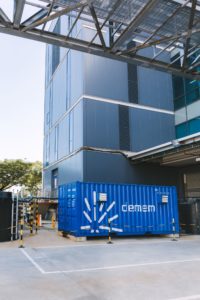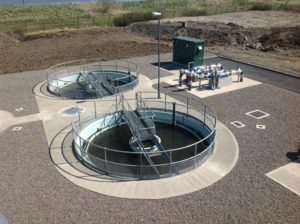Hundreds of Billions Could Be Spent for Upgrading U.S. Wastewater Plants
The U.S. House of Representatives Appropriations Committee recently heard testimony which makes a strong case that “modernizing and replacing the country’s aging water and wastewater infrastructure may be the single largest public works need that our Nation faces” and it requires a serious investment.
The U.S. Environmental Protection Agency’s (EPA) most recent needs survey estimates $187.9 billion is needed today by clean water agencies to comply with the Clean Water Act (CWA).
Some of the wastewater plants in the U.S. were built more than 100 years ago. Some plants are keeping up with their aging infrastructure, but most are not able to do so due to inadequate funding. The status of upgrades is continually reported in North American Municipal Wastewater Treatment Facilities & People Database.
The needs combine upgrades and replacements. The upgrade need can be likened to that of an old automobile. Current technology can allow much more efficient and economical operation. Equally important is the need to meet more stringent EPA and State requirements.
Here are some of the cities which are making necessary upgrades or attempting to do so.
$52 Million for Torrington Wyoming Upgrade and Phosphorous and Nitrogen Compliance
On Election Day, November 4, a referendum is set for voters to decide whether the city of Torrington can bond $52 million for a massive sewer infrastructure upgrade this fall. The upgrade is the largest ever for the facility, which was built in 1939 and contains 163 miles of sanitary sewer lines. The last major upgrade occurred in 1968. The improvements will help the facility meet more stringent environmental mandates. The EPA has asked facilities to decrease the amount of phosphorus and nitrogen levels in wastewater discharges. Failure to meet the regulations could result in fines against the city and a moratorium on new sewer connections.
$42.8 Million for Repairs on Bayshore, N.J. Wastewater Plant
The Bayshore Regional Sewerage Authority (BRSA) will begin a $42.8 million project for restoration and mitigation of buildings and machinery damaged during superstorm Sandy at its wastewater treatment plant. During Sandy, the 14-acre facility was inundated with three feet of water from the Raritan Bay.
King County, Washington Sewer Overflow Project could Cost $2.6 Billion
A King County auditor s report found that a combined sewage overflow project originally priced at $711 million could now cost ratepayers $2.6 billion. The Wastewater Treatment Division plans to build nine new facilities to hold and treat storm water and sewage by 2030. The clean water is released into local waterways like the Duwamish River, Puget Sound and Lake Washington. The county is halting the project for three months until there is a better explanation of the cost differences.
Savannah, GA to Spend $25 Million Plus to Upgrade Sewage Treatment Plant
Savannah is upgrading its main sewage treatment plant, moving away from incineration and toward a process that could ultimately result in the sale or giveaway of its “Class A biosolids” for agricultural or backyard use. Instead of burning the sludge that remains after wastewater is processed, the city will be harnessing the power of bacteria to render that waste harmless.
$140 Million for Visalia California Upgrade
When the work is done, the treated water will meet California s highest cleanliness standards for recycled water, making it usable to water lawns at public areas and to irrigate crops edible for humans, though it cannot be used for drinking. A key feature is the planned installation of a microfiltration system that - combined with naturally-occurring bacteria used earlier in the cleaning process - will remove fine and dissolved particles from the water after the heavier waste products have been separated. This will be followed by UV disinfection.
$7.5 Billion Water Bond could meet California s Water Needs during Drought
The $7.5 billion water bond approved by state legislators recently could help pay for local projects, from cleaning the polluted San Fernando Valley groundwater basin to recycling treated sewage for drinking water.
The Los Angeles region depends largely on scarce and expensive imported water, and the bond funds could help reverse that dependence by increasing the local supply. At the same time, the money could help restore native rivers, improve water quality, capture stormwater runoff and build parks.
The Los Angeles Department of Water and Power has some of the region’s most expensive proposed projects. In the San Fernando Valley basin, the DWP plans to spend between $600 million and $900 million on groundwater treatment facilities to clean up chromium and other pollutants left by aerospace companies and others. The Donald C. Tillman Water Reclamation Plant Groundwater Replenishment Project would add another layer of treatment to sewer effluent. It would pump or drain water into the San Fernando Valley groundwater basin.
The Upper San Gabriel Valley Municipal Water District, which supplies wholesale water to one million residents, is planning a recycled water project to recharge the basin with 10,000 acre feet a year of recycled water. An acre foot is equal to the water used by two families in Southern California per year. The $50 million to $75 million project would move treated water from the Sanitation District’s San Jose Creek Water Reclamation Plant in Whittier eight miles north to existing recharging areas that feed the porous San Gabriel River. It would reduce dependency on imported water by 25 percent, said Shane Chapman, USGVMWD general manager.
Source: The McIlvaine Company







